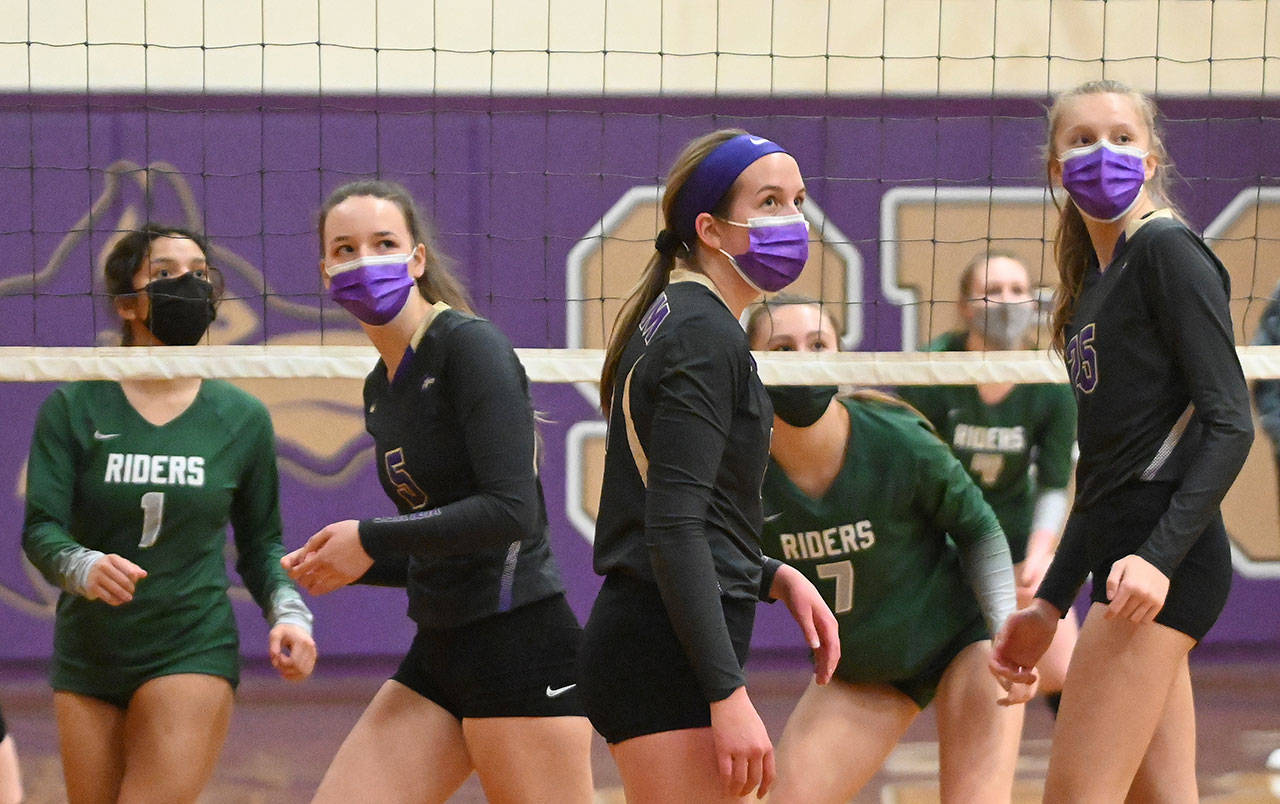What a spectacular, beautiful heart-breaking mess. For the three months myself and other writers attempted to cover what has to have been the strangest year in prep sports. We saw a hodgepodge of emotions: frustration, relief, confusement (confused amusement, a word of my own creation that seems particularly applicable here), chagrin.
And these words, repeated about a hundred times over: “At least we’re playing.”
I was going to ask Sequim High’s athletic director Dave Ditlefsen to try to put it in perspective, but his summary in an end-of-year recap to for school board directors in June I think sums it up pretty well. Here are the highlights:
In mid- to late-March of 2020, as the COVID-19 coronavirus emerged, schools across the state closed. Then and in early April, with no sign of the virus ebbing, spring sports were officially canceled.
The original plan from athletic directors, Ditlefsen said was to have winter sports starting up in January, fall sports in March and spring sports in May.
But a winter wave of COVID hit, and resumption of sports was once again postponed.
In January 2021, schools were told they could bring back sports as early as Feb.1. State high schools were divided into eight “regions,” with Sequim part of the Northwest region featuring schools from Clallam, Jefferson, Kitsap and Mason counties. Schools were tasked with accommodating teams in the region, Ditlefsen said, but were also autonomy to create sports seasons within those regions.
The Olympic League then expanded, with class 2A regulars Sequim and Port Angeles, Bremerton, Kingston, North Kitsap, North Mason and Olympic joined by bigger schools Bainbridge, Central Kitsap, South Kitsap and Shelton, along with smaller schools Klahowya and East Jefferson — a combined Port Townsend and Chimacum.
Sports “seasons” were created: Fall sports were to go first, set for Feb. 1-March 20 (the late winter). Then spring sports were on tap for March 15-May 1 (actually, oddly, int he spring!). Finally, winter sports, along with boys tennis, were slated April 26-June 12 (mid to late spring); the idea being, these high-risk, close-contact sports couldn’t compete in Phase 2 and pushing them back on the schedule gave teams a chance to have a season.
These were seven-week seasons with week-long overlap, meaning for a number of teams and athletes they’d be finishing one season while getting in practices for another.
There were no district or state playoffs scheduled, though some sports were allowed season-culminating events such as league finals and “crossover” games. That held true for sports such as cross country, basketball, baseball, fastpitch, tennis and volleyball.
Start ‘em up
When sports actually kicked off, Ditlefsen noted, only cross country was eligible to host competition. Sports deemed in the “moderate risk” category, such as volleyball and football, could practice but not play any games. That all changed by week two, when the region moved into Phase 2 of the state recovery plan, and games were allowed with a number of restrictions (masks, distancing, enough disinfectant to make a slip-n-slide from Hurricane Ridge to the Dungeness Spit).
For most fall sports athletes, masks were required with some allowances made for sports like cross country, whose athletes could remove masks once races started.
Sequim and Port Angeles initially allowed just two fans per athlete, and in lieu of that opportunity began livestreaming many of their sports.
Fall sports saw an all-time low in participation by both athletes and officials/referees, Ditlefsen said — a trend that continues throughout the school year.
“There’s lots of reasons; (students had) jobs, home responsibilities. Some were nervous, (didn’t want to wear) masks.”
Bus driver availability became an issue. Sequim only had drivers for Wednesday and Saturday events, while North Kitsap and Kingston went 100 percent self-transport while some Kitsap schools used charter buses for their competitions.
Sequim players saw no COVID issues in the fall, Ditlefsen noted.
In the spring, the Northwest region entered Phase 3 and COVID guidelines relaxed a bit. Track, gold and tennis players were not required to wear masks while baseball and fastpitch players could remove masks while outside the dugouts. Soccer players were required initially to don masks but that requirement was later removed.
Hosting venues had to assign seating for spectators and gather information for contact tracing. Space near the players were cordoned off by rope to add physical distance safety measures for players and coaches.
Some Sequim athletes did get COVID during the spring but it was not transmitted through the sports teams, Ditlefsen said.
With most winter sports moving indoors, spectators were once again limited. That meant four tickets per athlete were allowed and seats were assigned upon arrival. Masks were required for sports staff and spectators. . No visiting fans were allowed (insert Port Angeles joke here, readers). Wrestlers were given rapid covid test twice per week.
On the end, Sequim had no COVID cases during winter sports, Ditlefsen said.
Looking ahead
“This was obviously a very different year for us athletically,” Ditlefsen said in June.
As for the 2021-2022 prep athletic seasons, it’s anyone’s guess how things will look, Ditlefsen said. Fall sports seasons are being crafted as if they’ll be ready to go in early September.
“Hopefully things will be clear by then,” he said.
Will participation numbers return to pre-COVID levels? Overall Sequim and other schools saw about a 30-percent drop in participation, Ditlefsen noted. His own team, SHS baseball, didn’t have enough numbers for a junior varsity squad for the first time in …. ? Sequim’s boys swimming program dropped to a single athlete.
It doesn’t help when middle school sports programs for the most part were wiped out in 2020-2021. Will incoming freshman with little or no recent sports experience want to play? Will health concerns keep some student-athletes from participating?
We’ll see in the fall.


